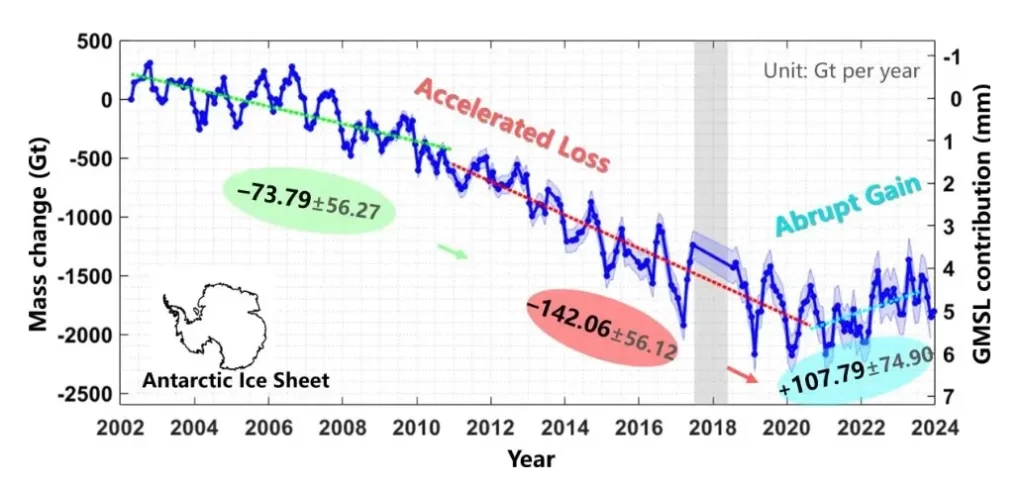In an exciting twist of fate for our planet, scientists have recently uncovered some uplifting news from Antarctica, revealing a significant increase in ice mass. This remarkable shift not only challenges previous assumptions but also brings hope in the ongoing climate discussion. Let’s dive into this inspiring story of resilience and nature’s surprising capabilities.
Antarctica — a vast, frigid expanse long known for its dwindling ice sheets — has recently been making headlines for an unexpected reason: it appears to be gaining ice rather than losing it. For years, we’ve watched with concern as the continent’s ice loss averaged about 147 gigatons annually from 2010 to 2020. Yet, as we stepped into this new decade, researchers from Tongji University, led by Dr. Wei Wang and Professor Yunzhong Shen, reported a surprising reversal in ice mass trends.
From 2021 to 2023, the Wilkes Land and Queen Mary Land regions in East Antarctica boasted an average ice sheet gain of 108 gigatons per year. To put this monumental figure into perspective, that’s equivalent to the weight of 1.5 million aircraft carriers! In a time when climate change often feels like an uphill battle, this positive development shines a ray of hope.
Interestingly, this growth occurred against a backdrop of rising global temperatures. Many areas experienced some of the hottest years on record during this period. The research utilized data from the Gravity Recovery and Climate Experiment (GRACE) missions, which measure changes in the Earth’s magnetic field, reflecting shifts in ice mass. Notably, four major glacier basins — Totten, Moscow University, Denman, and Vincennes — showcased a significant accumulation of ice, enough to positively influence rising sea levels.
This gain is projected to counter approximately 0.3 millimeters of sea level rise each year — about a quarter of the total rise noted throughout the 2010s. Such outcomes remind us that while challenges persist, nature has its own way of course-correcting in unexpected ways.

Though we find ourselves in 2025, scientists are cautious about predicting the future of this trend. While the data extended into 2024 began showing some mass loss, it’s essential to note that previous gains often preceded these reductions. It’s a delicate balance, influenced by the seasonal ebb and flow of nature.
While the Antarctic ice sheet is the world’s largest fresh water reservoir and a significant contributor to sea level rise alongside Greenland’s ice, the recent data reminds us that the narrative isn’t solely doom and gloom. In fact, it reveals potential opportunities for positive change. Advocates for climate action have often portrayed the situation as critical, urging immediate efforts. However, these findings suggest that, surprisingly, nature can indeed reclaim its footing under the right conditions.
This unexpected and uplifting story serves as a reminder that hope is not lost, and by understanding the intricacies of our planet, we can foster a sense of optimism in the face of climate change. So, let’s share this enlightening news and inspire others to look toward a brighter future for our beautiful world!
If you would like to see similar good news stories click here & Share this to brighten someone’s day.





